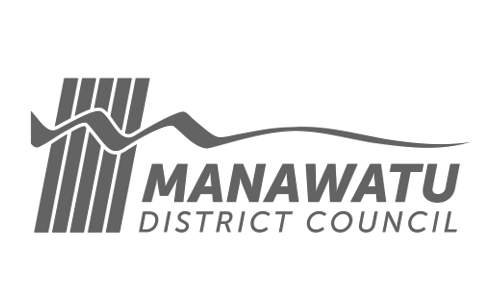For the first time in more than a generation, population growth has returned to all districts in the Horizons Regional Council area – Horowhenua, Manawatū, Palmerston North, Tararua, Rangitīkei, Ruapehu and Whanganui.
The latest Regional Economic Report shows the region is now home to about 236,900 people – surpassing the previous high in the 1990s – and comes off the back of increasing numbers since 2001.
The growth comes as New Zealand’s terms of trade returns to levels not seen in Aotearoa since the 1950s (The terms of trade is a measure of the buying power New Zealand has abroad for its exports. If rising, it means that New Zealand can buy more imports for the same amount of exports).
Central Economic Development Agency (CEDA) Chief Executive Linda Stewart says the region must capitalise on growth and close the gap on national indicators such as GDP per capita and household earnings. In the year ahead, we will hopefully see job growth across all districts in the region, which will help.
“We have a once in a lifetime opportunity to strengthen the wider economy so that we can obtain sustainable growth that provides opportunities for families across the central North Island for the generations to come.”
Ms Stewart says the results will send a clear message to central government, its agencies and investors in general. Forecasting should be updated so public infrastructure investments take growth into account.
The latest Infometrics GDP estimate shows good growth across the region. Highlights include:
- A 39% increase in the value of residential building consents.
- Net overseas migration increasing by 19% and anecdotal evidence of increased migration from other areas of New Zealand.
- Strongest recorded population growth in 26 years, highlights include:
- Horizons North-West (Rangitīkei, Ruapehu and Whanganui) has gone from a net loss from overseas migration of 366 people in the year ending June 2013 to net gain of 304 people in the year ending June 2017.
- Horizons South-East (Horowhenua, Manawatū, Palmerston North and Tararua) has gone from a net loss of 472 people in the year ending June 2013 to a net gain of 949 people in the year ending June 2017.
- Numbers leaving to move overseas have dropped dramatically:
- For Australia numbers moving overseas have dropped from 1,629 in the year to end of June 2000 to 899 in the year to June 2017.
- For the UK the number of people leaving has declined from 700 people in June 2000 to 248 in 2017.
- Domestic visitor spending increasing by 6.3% and international visitor spending increased by 9.5%.
- The increase in provisional Fonterra farmgate payout price to $6.15 for the 2016/17 season and the forecast $6.75 for the 2017/18 season is a welcome improvement on the $3.90 payout in the 2015/16 season. There is also strength in sheep, beef and skins prices despite the high New Zealand dollar, providing strong support for growth across the region.
Palmerston North City Council Economic Policy Analyst Peter Crawford says in the last two years there has been stronger GDP growth in Horizons North-West than in Horizons South-East.
Mr Crawford says there has been a doubling in the number of new houses consented across the region. Consents were issued for the construction of 917 new houses in the year to June 2017 compared with 461 in the year to June 2015. Continuing strong growth in house prices and rents will continue to support strong growth in housing construction in the region.
Non-residential consents for the year to June 2017 were weaker than the previous year due to the timing of major projects that were consented in the June 2016 quarter. Several major projects will be consented in the second half of this year, and the outlook is even stronger, with work already started and committed for a number of major projects:
- Defence Force $469 million capital investment
- Powerco $150 million growth and security projects, and renewal programmes
- MidCentral DHB investment plan spending of $282 million
- Massey University spending of $184 million
- Significant national roading investment: Otaki to north of Levin, Manawatū Gorge replacement and Palmerston North ring road.
Accelerate25 Lead Team facilitator Michael McCartney has welcomed the news of population and GDP growth across the region.
“Accelerate25, the regional economic growth programme, aims to increase the prosperity of all our districts and cities,” he says. “It is very satisfying to see growth occurring. All the indicators are showing that further progress will occur in the years ahead so we should see an end to the decline in our rural townships.”
We are facing a wall of work
Ms Stewart says a skills shortage is already occurring in construction, distribution and logistics, and IT.
A co-ordinated approach is needed to ensure the education pipelines are geared up to accommodate our future needs and in the meantime we need to attract people with skills from outside our region.
“The increased work comes as our employment participation catches up with national averages,” she says.
“Alongside this, our house values are increasing as are rents. We can expect this to continue as our population grows. We should be cognisant of the effect on residents, and it would be timely for renewed look at social housing if we are to improve the lives of people across the spectrum,” says Ms Stewart.
We are spending more
Mr Crawford says growth in electronic card retail spending in the Manawatu-Whanganui region accelerated in the June quarter. Horizons North-West, helped by improved retail options in Bulls, increased by 7.9% and Horizons South-East (excluding Horowhenua) increased by 4.1% compared with an increase of 4.3% for New Zealand. The quarterly growth rate for the region has been higher than the national growth rate since January 2017.
“We are attracting more visitors, both domestic and international with good growth in Horizons North-West where international spending increased by 12% for the year ending June 2017. However, the standout territorial authority was Horowhenua, which recorded a 33.9% increase in international spending.”
The Regional Economic Report can be found here. It is compiled by Palmerston North City Council Economic Policy Analyst Peter Crawford on behalf of all territorial authorities in the Horizons region.
For more information contact:
Linda Stewart
Chief Executive
027 801 6434
Or,
Peter Crawford
Economic Policy Analyst
Palmerston North City Council
06 356 8199
Or,
Michael McCartney
Accelerate25 Lead Team Facilitator and Horizons Regional Council Chief Executive
06 952 2800





